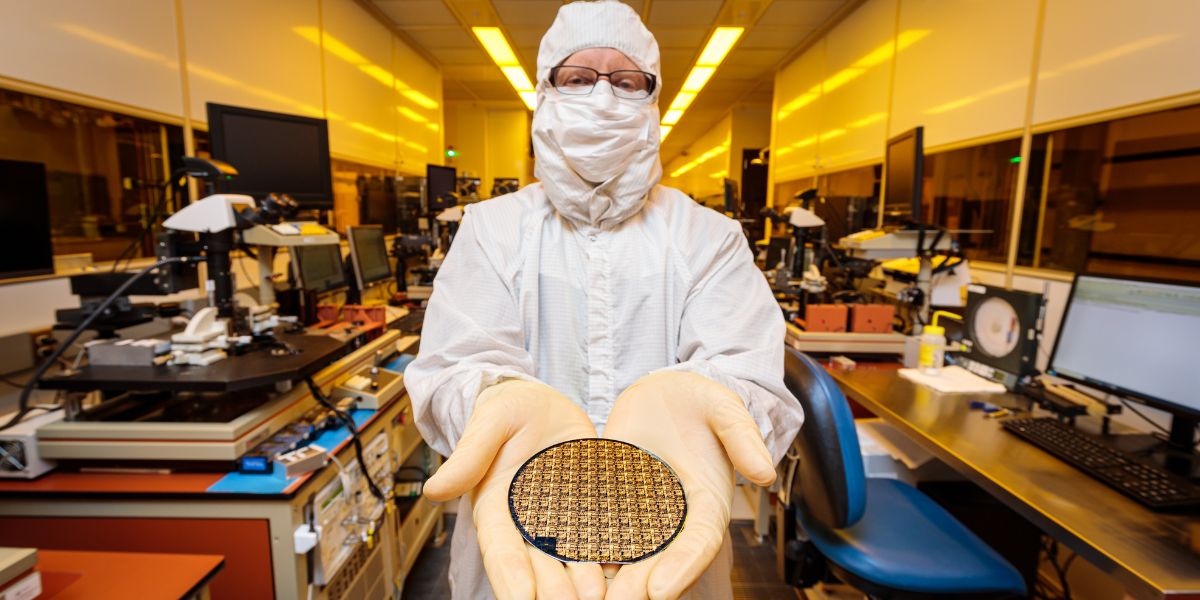Integrating SWAP and MMEC Technologies into MOSIS 2.0

In 2025, MOSIS 2.0, the USC-led California DREAMS (CA DREAMS) engineering service, is significantly expanding its semiconductor prototyping capabilities beyond Southern California. This expansion, supported through an additional $27 million investment from the Department of Defense in November 2024, integrates resources from two additional technology hubs: the Southwest Advanced Prototyping (SWAP) Hub, led by the Arizona Board of Regents on behalf of Arizona State University, and the Midwest Microelectronics Consortium (MMEC) Hub in Ohio.
"We are expanding MOSIS 2.0 services to provide the best service we can," MOSIS 2.0 Director Mike Haney said. "That means we need to expand our web beyond the California DREAMS locale, deploy our resources, and include new fabs and functions that we didn't support before. We appreciate the government’s continued support in making this growth possible."
SWAP Hub: Advancing indium phosphide technologies
Through its collaboration with the SWAP Hub, MOSIS 2.0 users now gain access to Sandia National Laboratories’ indium phosphide (InP) photonic fabrication facility—a full-flow foundry that represents a significant expansion into compound semiconductor technology. Sandia brings more than 18 years of expertise across silicon and InP photonics, helping MOSIS 2.0 broaden its technical offerings to new research communities.
The collaboration is already underway, with the inaugural multi-project wafer (MPW) run combining five different designs onto a single platform. Participants include the University of Michigan, UC Santa Barbara, and Northrop Grumman, which is contributing three designs. The interested parties share resources and benefit from MOSIS 2.0’s administrative efficiencies. The MPW run lowers the barrier to access for the chip designers by pooling projects onto a single wafer and accelerating results while avoiding duplication of effort.
Although this is an initial test run, the Sandia capability is expected to become a regular offering through MOSIS 2.0, freeing future customers from the technical and administrative overhead typically associated with accessing the foundry.
“It’s a win-win,” Haney said. “SWAP gets to deploy their foundry, and MOSIS 2.0 gets to help bring customers to it.”
MMEC Hub: Building MOSIS 2.0’s the digital backbone
The MMEC Hub brings a different type of collaboration: it is developing the digital backbone that powers MOSIS 2.0’s operations. At the center of this effort is MMEC’s DESIGN platform, a centralized platform that consolidates key resources—including intellectual property, manufacturability data, and resource availability—that will provide a single access point for chip designers. MOSIS 2.0 will deploy its digital resources on MMEC’s platform.
Additionally, MMEC is executing a cross-Hub-led and owned enablement solution which is providing six of the eight Microelectronics Commons innovation hubs with access to hundreds of electronic design automation (EDA) tools, implemented through MOSIS 2.0. This initiative, known as the Cross-Hub Enablement Solution (CHES), represents tens of millions of dollars in EDA tool licenses from top vendors—which can be used for ME Commons projects—dramatically lowering the barriers for semiconductor development.
“One cannot design a microchip without EDA tools,” said CA DREAMS Director Steve Crago. “Without the CHES activity, each hub would have to negotiate with vendors separately for every project. By negotiating collectively, we have more bargaining power to get better pricing.”
Meeting diverse stakeholder needs
Ultimately, the expansion of MOSIS 2.0 to include the SWAP and MMEC Hubs allows the engineering service to better address the wide range of needs across the microelectronics community. Different stakeholders—from academic researchers to commercial developers—have different priorities, but most needs ultimately come down to the same question: how will you build something?
“That’s where MOSIS 2.0 comes in,” Haney said. “When a stakeholder needs more design help, we ask: Can we supply that, or can we connect them to the right people who can?”